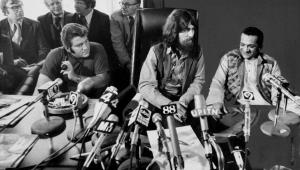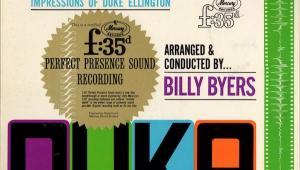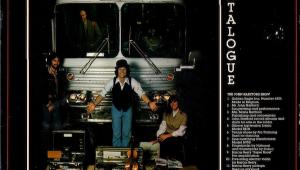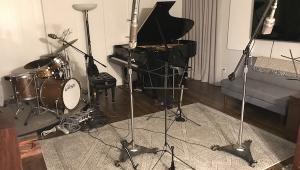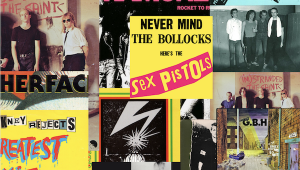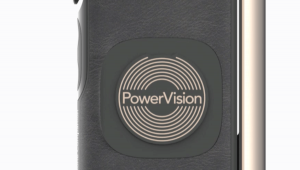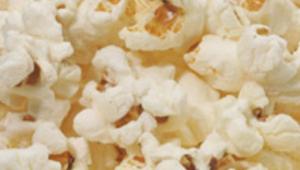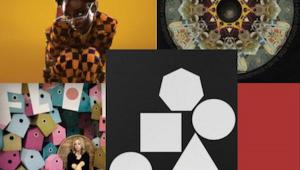Masterdisk Mastering Engineer Don Grossinger on the Cutting of the Smile Lacquers
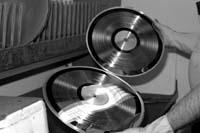
This interview was conducted by New York Musician Magazine's Bill Taylor, and originally run there. We reprint it thanks to
the kindness or Mr. Taylor and his publication. Thanks also to Don Grossinger for gettting it for Musicangle.com.
BT: What was your participation on the project?
DG: I did all of the vinyl mastering and some of the QC work to make sure the test pressings were up to par.
BT: How did you get the project? I was recommended by Bob Ludwig who had mastered the CD for the project and Joe Gastwirt who had worked on many Beach Boys projects with Mark Linett. Bob didn't do it himself because he no longer has a lathe. This is the second project he's sent to me. He sent the Rolling Stones' remastering for vinyl work, the new SACD masters, to me as well.
BT: Did you do the whole Brian Wilson album or just a few selected cuts?
DG: It was more than the whole album, actually. The whole CD consists of three suites which are 47 minutes long in total. Each of the sections took one side of the album. The fourth side, which I EQ'd and mastered from scratch, consisted of bonus tracks. These were 4 instrumentals of some of the songs that were on the album as vocals. These tracks will only be on the vinyl release, not the CD.
BT: What did they send you?
They sent me hard drives with files of Pro tools HD, 24 bit, 88.2k, and the same program recorded on to a 15 ips. 1/4”, no noise reduction, CCIR calibration, analog reel-to-reel tape. CCIR is different equalization curve that results in a quieter tape than one with the standard NAB curve. It has different EQ points as far as the boost and cut are concerned. It results in a very quiet analog tape without any noise reduction. Ultimately it was the source that I used for the mastering. After hours of listening to the Protools and then the tape it was obvious that the analog tape sounded wider and deeper and richer than the Protools files. It was not even close. It's amazing. The difference in sound that I heard is exactly the same difference I heard between the production CDs and the production vinyl. It's like night and day.
BT: Did the vinyl sound as clear to you as the CD? Was there any other tradeoff for the richness of the tape?
DG: There was no downside, not as far as I'm concerned.
BT: Did you master this any differently than you normally would?
DG: I absolutely did. I was asked to keep this totally analog and not have it go to digital in any way. Fortunately Masterdisk has been around a long time and has a superb Studer A80 1/4” playback machine which has Preview heads and Program heads, so I was able to avoid the ubiquitous digital delay line that everybody cuts through. Usually everything that goes onto a record goes through a digital delay process to enable the cutter head to set up in advance of the signal. This allows the grooves to sit adjacent to each other without over cutting. Instead of using a digital delay line we set up a tape path with enough of a delay between the Preview and Program heads so the cutter head could set up in an analog manner. We also removed from the signal path an entire normal analog transfer console. I did all of my level corrections direct from the tape playback electronics. It was as pure as it could possibly be going directly from the playback machine to the cutting lathe. Also, no centering of the bass frequencies was done, as per Bob's request I didn't want to tweak anything. I just wanted not to lose anything. Everything was already there. Also, normally, what you would do on a project would be to cut each side as loud as possible given the program material for that particular side. So a longer side would be cut at a lower level, a shorter side might be cut louder. This one was cut so the volumes were the same all the way across so there would be a smooth and enjoyable listening process.
BT: How were you struck by the music itself?
DG: It was amazing. My hair is standing on edge right now. The first time I listened to Smile I went out to lunch right afterward, and the guy I was with said that I seemed like I was drunk. It's not like anything I've heard in 30 years. It is a real emotional mood piece, not like anything the record companies are putting out today. It's not product. It's quite symphonic. I feel sorry that there are not going to be that many copies of the pressings around. It's a limited edition 180 Gram audiophile pressing, heavyweight pressing. I made three sets of masters, 1 for the US, 1 for England, and 1 for Europe and I think they're only going to make 3000 - 5000 copies for each market. It's definitely going to be a boutique item. I wish more people could hear the vinyl from Bob's analog tapes because I feel there is more music there, than on the CD. I don't mean to demean the CD at all. For someone who only has the CD it still sounds incredible. But there's so much more to it when you hear the vinyl. But, if I hadn't heard the vinyl I would still be blown away. The music itself is extraordinary.
BT: Do you know how the music was recorded?
DG: Not first hand. I was not at the sessions. I understand they recorded it in much the same way the Beach Boys recorded in 1966 and 1967. It was recorded in segments and then put together. I heard they did it entirely in Protools and that it was Mark Linett's idea to record from the Protools hard disk onto a 1/4” analog deck. It was a brilliant idea.
BT: Is there anything else about this project you want to add?
DG: I also mastered a 7” single of 2 of the tunes from Smile for England and it's currently Number 5 on the British Pop Charts. I also understand the CD is Number One on Amazon.Com both nationally and internationally. It was a huge honor for me and the staff at Masterdisk to have been chosen to work on this project.
BT: What other projects are you working on?
DG:
I'm currently working on remastering a number of classic Rap and Hip Hop singles from the 80's for BMG






